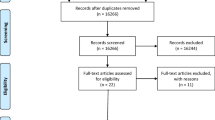Abstract
Background
Instruments based on actuarial forensic risk assessment models are sensitive to the calibration sample, and the inclusion criteria for the subjects of a study population will influence the features of the resulting model. If the same instrument is used in populations that are not part of the calibration sample, the discriminative validity of the instrument is jeopardized; thus the definition of the calibration sample is very important. The aim of this study was to examine how sensitive prognostic models are to the calibration sample.
Method
Two samples (N = 773) of offenders sentenced to at least 10 months in prison for a violent or sexual offense were used in this study. The “sanction sample” (recruited during August 2000, N = 515) consisted of all violent and sexual offenders actively administrated by the Criminal Justice System of Zurich, Switzerland. The “verdict sample” (recruited over two years, N = 258) included all offenders convicted in the Canton of Zurich during a two-year period. Both samples were unbiased, since all subjects that met the study criteria were included. In the first analysis, differences between the two samples were shown with respect to socio-demographic, criminological, and psychiatric variables using bivariate logistic regressions. In the second analysis, recidivism was estimated separately for both samples, using a logistic regression model as a function of a set of psychiatric, socio-demographic and criminological variables.
Results
Bivariate logistic regression showed that different risk factors for recidivism existed for both samples.
Conclusion
Forensic risk assessment models are very sensitive to the calibration sample. There is strong evidence that, even when index-offenses and the socio-cultural background are the same, risk factors for recidivism differ depending on the stage of the judicial process in which the subjects are (e.g. whether a subject is indicted, on conditional release, on parole, or no longer under the supervision of a parole board). Unfortunately, none of the currently available actuarial risk assessment instruments that have been validated in European countries consider the different stages of the judiciary process.

Similar content being viewed by others
References
Albrecht PA (1993) Multidimensional personality assessment in penal measures. An evaluation questionnaire as the deciding factor of dangerousness prognosis. Psychiatr Prax 20:9–14
Andrews DA, Bonta J (2003) The psychology of criminal conduct. Anderson, Cincinnati
Bonta J (1998) Mentally disordered offenders. In: Solicitor General Canada
Dahle K-P (2005) Psychologische Kriminalprognose. Centaurus, Herbolzheim
Grove W, Zald D, Lebow B, Snitz B, Nelson C (2000) Clinical versus mechanical prediction: a meta-analysis. Psychol Assess 12:19–30
Hanson RK, Thornton D (2000) Improving risk assessments for sex offenders: A comparison of three actuarial scales. Law Hum Behav 24:119–136
Hilton NZ, Simmons JL (2001) The influence of actuarial risk assessment in clinical judgments and tribunal decisions about mentally disordered offenders in maximum security. Law Hum Behav 25:393–408
Krippendorff K (2003) Content analysis: an introduction to its methodology. Sage Publications, Thousand Oaks, CA
Mossman D (1994) Assessing predictions of violence: being accurate about accuracy. J Consult Clin Psychol 62:783–792
Quinsey VL, Harris G, Rice M, Cormier CA (2003) Violent offenders: appraising and managing risk. APA, Washington DC
Repo-Tiihonen E, Halonen P, Tiihonen J, Virkkunen M (2002) Total serum cholesterol level, violent criminal offences, suicidal behavior, mortality and the appearance of conduct disorder in Finnish male criminal offenders with antisocial personality disorder. Euro Arch Psychiat Clin Neurosci 252:8–11
Rice ME, Harris GT (1997) Cross-validation and extension of the violence risk appraisal guide for child molesters and rapists. Law Hum Behav 21:231–241
Soyka M, Morhart-Klute V, Schoech H (2004) Delinquency and criminal offenses in former schizophrenic inpatients 7–12 years following discharge. Euro Arch Psychiat Clin Neurosci 254:289–294
Stadtland C, Kleindienst N, Kroner C, Eidt M, Nedopil N (2005) Psychopathic Traits and Risk of Criminal Recidivism in Offenders with and without Mental Disorders. Int J Forensic Mental Health 4:89–97
Swets J, Dawas R, Monahan J (2000) Psychological science can improve diagnostic decisions. Psychol Sci Publ Interest 1:1–26
Urbaniok F (2004) Validität von Risikokalkulationen bei Straftätern - Kritik an einer methodischen Grundannahme und zukünftige Perspektiven. Fortschritte für Neurologie und Psychiatrie 72:260–269
Urbaniok F, Endrass J, Rossegger A, Noll T (eingereicht) Violent and sexual offences: A validation of the predicitve quality of the PCL:SV in Switzerland
Urbaniok F, Noll T, Grunewald S, Endrass J (angenommen) Prediction of sexual and violent offences: A replication study of the VRAG in Switzerland. J Forensic Psychiat Psychol
Urbaniok F, Noll T, Grunewald S, Steinbach J, Endrass J (2006) Prediction of sexual and violent offences: A replication study of the VRAG in Switzerland. J Forensic Psychiat Psychol 17:23–31
Urbaniok F, Noll T, Rossegger A, Endrass J (2005) Die prädiktive Qualität der Psychopathy Checklist-Revised (PCL-R) bei Gewalt- und sexualstraftätern in der Schweiz. Eine Validierungsstudie. Zur Publikation eingereicht
Author information
Authors and Affiliations
Corresponding author
Rights and permissions
About this article
Cite this article
Urbaniok, F., Endrass, J., Rossegger, A. et al. The prediction of criminal recidivism. Eur Arch Psychiatry Clin Neurosci 257, 129–134 (2007). https://doi.org/10.1007/s00406-006-0678-y
Received:
Accepted:
Published:
Issue Date:
DOI: https://doi.org/10.1007/s00406-006-0678-y




